Does Behavior Fossilise?
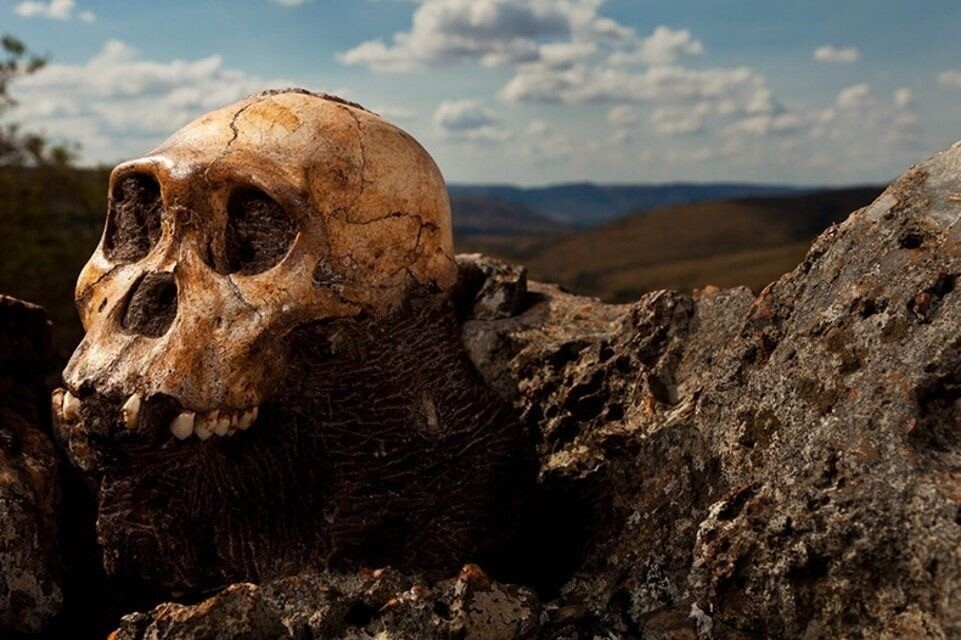
The question of whether human behaviour can fossilise is an unorthodox way of understanding human evolution, particularly in how symbolic behaviour — such as language and rituals — emerged from biological evolution. Understanding the roots of human culture and symbolic expression is not abstract, but rather developed through evolutionary changes in brain structure and cognitive capacity, shaped by natural selection. Highlighting the neocortex of the human brain is a good start. Over millions of years, this six-layered part of the brain has evolved to support higher-order cognitive functions such as abstract thought, planning, and problem-solving. This evolutionary process highlights how the Homo Erectus species has developed through increased social interaction and environmental adaptability. This consists of biological mechanisms like natural selection, which favoured individuals with enhanced problem-solving abilities, social intelligence, and communication skills, ultimately giving rise to behaviours that left physical traces in the archaeological record — such as art, tools, and burial practices. By exploring the human exception, we are able to examine how human behaviours have not only shaped human history but were also preserved as fossilised forms of material culture.
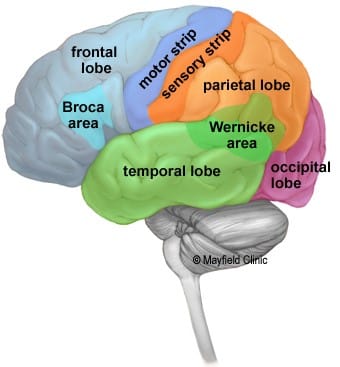
Artefacts act as physical manifestations of cognitive and motor abilities which have evolved over millions if years. For example, the evolution of the human hand, in particular the way in which opposable thumbs have provided us with precise grip, has been crucial for the development of tools. This precision grip (along with the power grip) was first identified by Napier who wrote “In spite of the multiplicity of activities of the hand, there are only two prehensile actions: these are called the precision grip and the power grip.” In both of these grips, the carpo-metacarpal joint of the thumb is stabilised by the joint surfaces and the tightness of the ligaments, regardless the position of the thumb (both in full abduction or abduction), however is least stable in the intermediate position. The biological evolution of the hand is directly linked to the increased capacity of the motor cortex controlling the intricate skeletal muscle movements. Such precise and intricate finger movement is possible due to the complex structure and neural coding of the motor cortex. In addition to motor skills, toolmaking also required certain advancements in working memory, “the small amount of information that can be held in mind and used in the execution of cognitive tasks”, and executive function, the set of cognitive skills that allow a person to get things done, such as problem solving and decision making, cognitive domains managed by the prefrontal cortex. These biological advancements enabled early humans to envision, plan and execute complex tasks (such as flint knapping). This ability to manipulate objects can be seen as both a “fossil” of cognitive advancements as well as physical evidence – such as stone tools – of evolving motor and spatial reasoning skills.
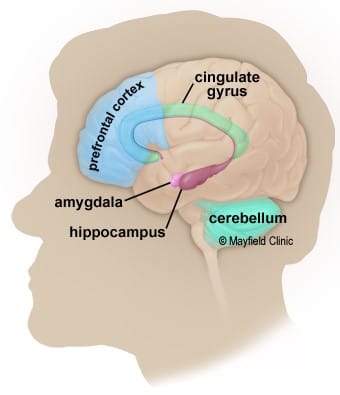
Furthermore, art is a major marker of cognitive and social evolution, displaying visual and social cognition development as well as the evolution of collective memory and symbolism. Artworks such as cave paintings, petroglyphs – drawings carved in stone – and sculptures reflect the evolution of visual processing in the brain reliant on regions such as the occipital lobe and fusiform gyrus. The visual cortex is divided into 8 main areas; however, the most important receiving area is the occipital lobe at the back of the brain which is primarily responsible for visual processing, amongst other things such as spatial awareness and motion detection, crucial for survival. Similarly, the fusiform gyrus is a region in the brain located in the temporal and occipital lobes (see fig.1) which aids in high-level visual processing, such as recognising faces and other complex visuals such as symbols and art. Artworks, such as cave paintings in Lascaux, France (see fig.3), are not only aesthetic expressions but also signs of enhanced memory, symbolic thought and social cooperation, therefore displaying how the visual processings of humans has progressed through time. Art also reflects the evolution of collective memory where shared knowledge and experienced could be communicated through generations. This ability to pass down cultural knowledge is linked with the way in which the hippocampus consolidates memory. The hippocampus (see fig.2) is primarily in charge of the storage of long-term memory, however, also plays a part in spatial awareness and is located in the inner region of the temporal lobe.
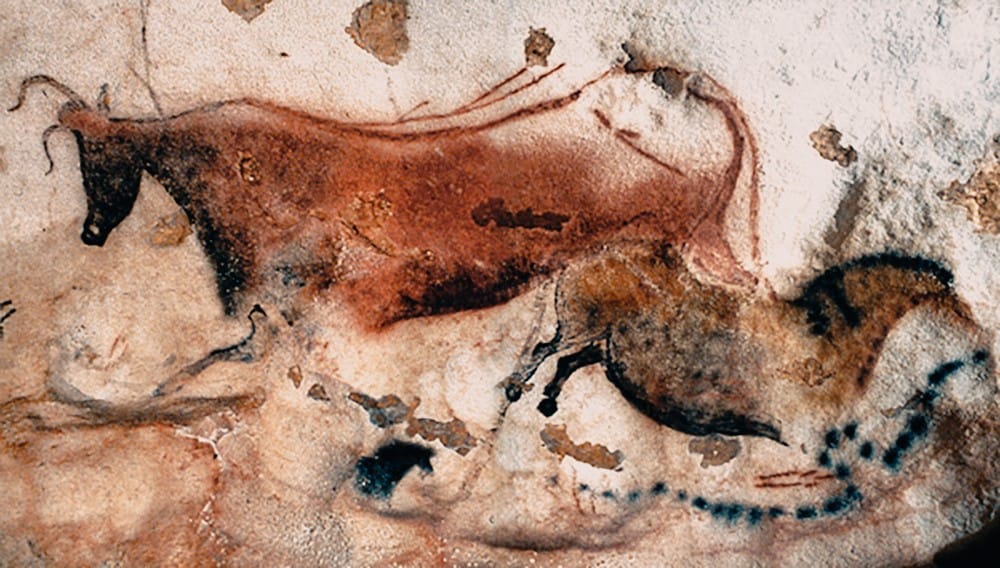
Alongside tools and artwork, burial sites, such as those of the Neanderthals, have expressed the evolution of empathy and symbolic thinking, revealing complex social behaviours which suggest that they possessed an emotional depth and the ability to recognise mortality. These behaviours stem from our limbic system (see fig.2) associated with empathy, emotional regulation and memories, in particular the prefrontal cortex, responsible for short term memory, and the amygdala. In the medial temporal lobe (see fig.1), the amygdala is responsible for processing emotional responses, in particular aggression, fear and anxiety, as well as further processing memories and making decisions. Moreover, the inclusion of grave goods, such as personal items or tools, with the dead represents symbolic thinking and the recognitions of one’s continued significance after death, showing how human cognition has evolved over time due to biological changes, leading to the development of social understanding and cultural practices.
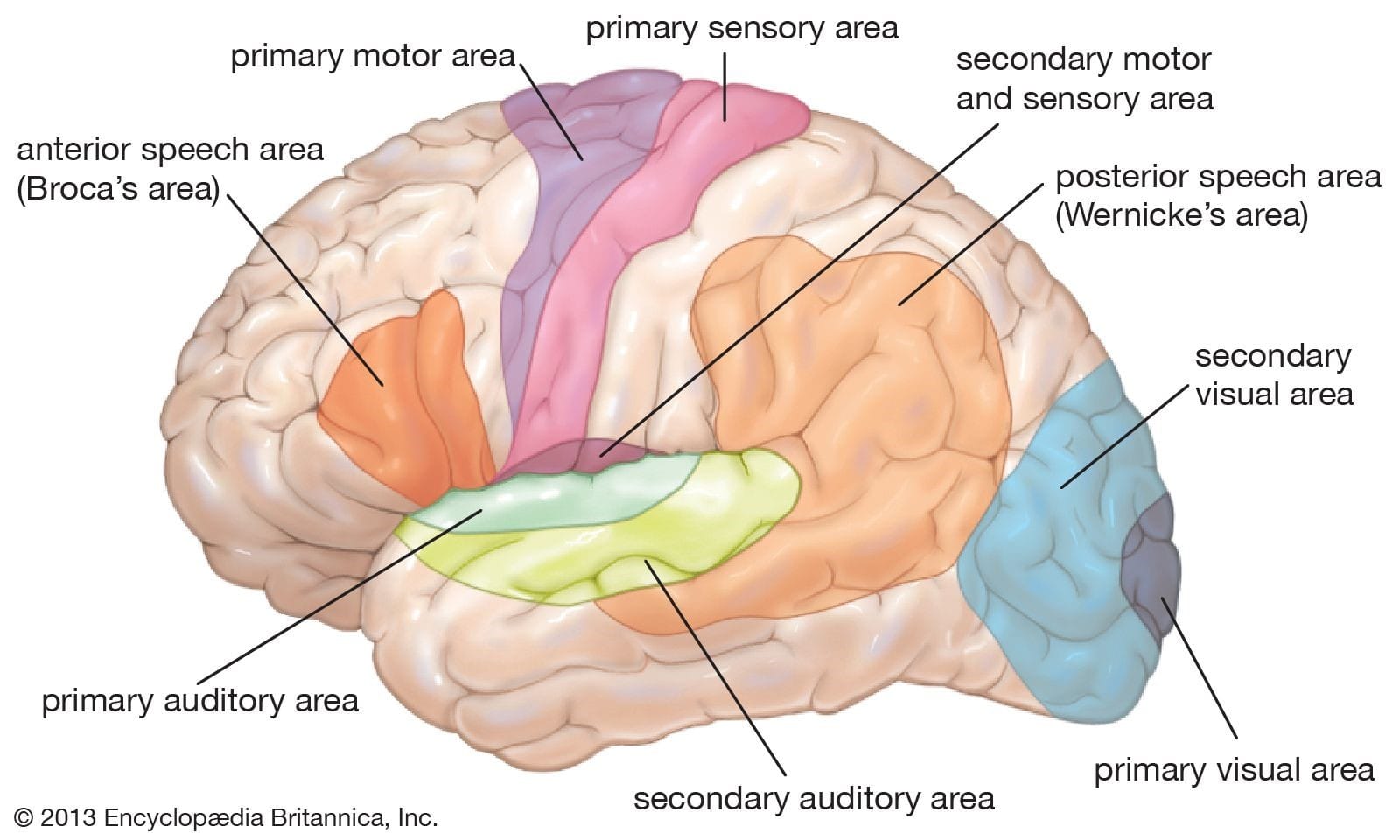
These behavioural fossils extend beyond physical manifestations of art and tools, symbolic thought and language are some of the most defining features of human evolution. To start, the evolution of Broca’s and Wernike’s areas (see fig 1), both located in the left hemisphere in most people – the 95% who have a left dominant hemisphere - is crucial for the production and comprehension of language. Broca’s area is responsible for both language and comprehension, and although the exact function is somewhat still unclear, it is known to directly impact the motor movements necessary for speech. Studies have shown that impairments in this area – Broca’s aphasia - have also had an impact on comprehension of language, as well as speaking and writing. This is located in the third frontal convolution, just behind the face area of the motor cortex (see fig.4). Various parts of Broca’s area are responsible for different aspects of understanding speech with the posterior responsible for phonology (how words sound) and the anterior aiding in semantics (word meaning). The production of gestures, repetition of language, the grammar and fluidity of language as well as how other’s actions are interpreted are also all part of the function of Broca’s area. Wernicke’s area, located in the posterior third of the upper temporal convolution in the left hemisphere, next to the auditory cortex (see fig 4) is required for the comprehension of sounds in speech as it contains motor neurones involved in speech comprehension. Similar to Broca aphasia, damage to the temporal lobe can cause a person difficulty in understanding speech and while they may speak fluently, their speech is generally characterised by circumlocution and lacking content, known as Wernicke aphasia. These areas developed significantly in early Homo species which marked a transition towards complex communication, and even today, these areas of the brain are constantly evolving and adapting acting as physical evidence of how our behaviour throughout time has had an effect on the human body and how we evolve. This advancement in such neurobiology reflects on how early behaviour has progressed, as well as how fossilised evidence of tools, artworks and symbols have showed the capacity for shared understanding and communication.
Similarly, the evolution of the FOXP2 gene, or the “language gene” was the first to be associated with an inherited form of language and speech disorder and has played a crucial role in facilitating the fine motor control needed for speech and the cognitive capacity to comprehend and generate language. This ability relies on fine motor control in the larynx and mouth, which is lacking in primates such as chimpanzees and apes, thus acting as a major distinguisher. Furthermore, mutations in this gene have distinguished modern humans from early homo species as well as from other primates and may therefore explain our unique linguistic abilities. Alongside spoken language, written language marked a monumental shift in the ability to preserve symbolic thought and can be seen as cognitive fossils. Early writing systems, such as Sumerian cuneiform (see fig.5) or Egyptian hieroglyphs are physical manifestations of abstract thinking. Such written records fossilise human thought processes, preserving not only language but also the cultural norms, legal systems and historical narratives of ancient societies.
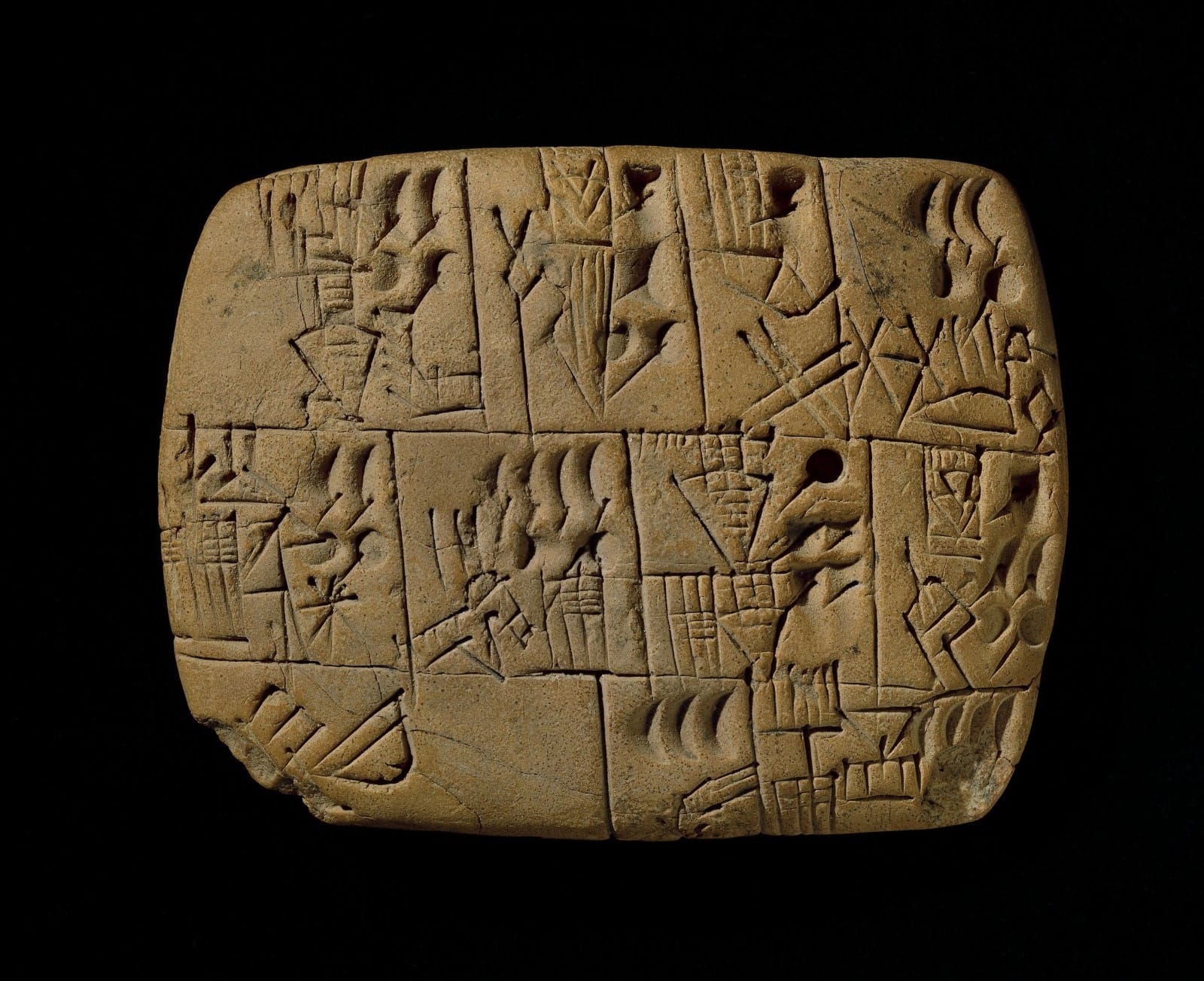
Abstract thinking, such as the use of symbols and metaphors, is a trait that has evolved in humans to enhance problem solving, planning, and social cooperation, a trait that has helped us to adapt to a constantly changing environment through time. This ability to think symbolically is linked to the default network activity in the brain: the brain’s default network is a group of areas that becomes active during rest or passive moments. It is also stimulated during tasks where past events need to be recalled or when imagining upcoming events, as well as supporting introspection and cognitive abilities which are key to behaviours which can fossilise, such as the creation of symbolic art, writing and religious rituals. Such symbolism allowed early humans to coordinate complex social behaviours, such as hunting strategies and resource distribution, essential for community survival. These behaviours, often symbolically represented in material culture (such as cave paintings depicting hunting scenes), reflect the evolution of prosocial behaviour and altruism, thus displaying the way in which the areas of the brain involved during altruistic decision making and therefore altruistic behaviour has evolved. These areas include the medial prefrontal cortex (see fig.2) as well as the limbic system.
Another unique perspective is through the lens of modern human behaviour, which continues to be shaped by the same biological foundations that have driven cultural evolution for centuries. The development of contemporary cities, technological innovations, and social structures can be considered “behavioural fossils”. These are current-day extensions of early human behaviour, which were grounded in early biological traits — such as cooperation, social cognition, and problem-solving. These behaviours, once visible in the tools and art of early humans, have essentially culminated in modern achievements (i.e city buildings and technological advancements), serving as “behavioural fossils” of our evolved capacities for planning, collective action, and resource management. Furthermore, the invention of mobile phones, computers, and modern architecture reflect the sophisticated problem-solving and forward-thinking nature that define human cognitive evolution. Importantly, the functioning of the prefrontal cortex and hippocampus (see fig.2) — critical for memory, creativity, and learning — continue to propel modern innovation and cultural development. Just as early tools and art revealed the cognitive capacities of ancient humans, future archaeologists may also interpret modern technological and cultural artefacts as evidence of the advance social and cognitive evolution that continues to shape human behaviour today. These artefacts, left behind in the archeological record, will serve as fossilised traces of the cultural practices and behaviours of the present.
In conclusion, when we explore the human exception, we can see human behaviour fossilised through the tangible artefacts of ancient cultures, but also through the ongoing evolution of modern society. Through biological evolution, humans have developed the unique cognitive and motor abilities that gave rise to symbolic thought, communication, and culture, ultimately leaving behind “fossils” of behaviour in tools, art, and rituals. Furthermore, the growth of the neocortex, alongside structures like the prefrontal cortex and the limbic system, played important roles in shaping early social intelligence and problem-solving skills that still underpins human culture today. Similar to how early Homo species evolved to communicate, plan, and adapt, contemporary behaviours—manifested in cities, technology, and social organisation—represent an ongoing trajectory of biological and cultural evolution. Therefore, future archaeologists can see human behaviour fossilised not only in the physical relics but also in the cultural, technological, and social progress that continues to define our species.